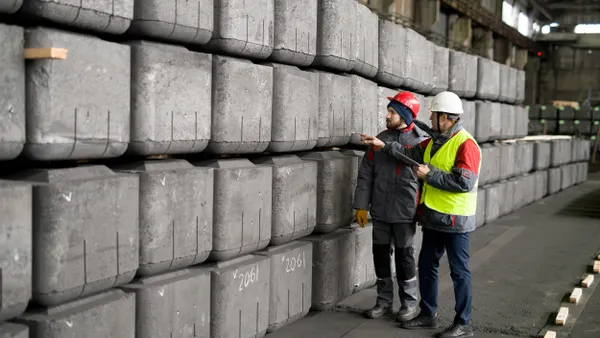Dive Brief:
- Over the next two years the percentage of U.S.-serving supply chains located in North and South America will rise to 69% from 59%, according to the findings of a KPMG survey of 250 U.S.-based executives from companies with annual revenues of $1 billion or more.
- Exactly what countries house the lion’s share of those operations are expected to shift over the next three years, with the U.S. expected to see its share drop to 44% from 62% while Canada’s is expected to dip to 30% from 39%. Mexico tops the countries poised to enjoy gains, with its share poised to rise to 36% from 27%, replacing Canada as the second-most popular country for nearshoring in the Americas.
- Companies have been shifting away from “globalized” sourcing of goods toward “localized” supply chains that reduce the distance between production and customer after recent crises — including the COVID-19 pandemic and the Panama Canal drought — exposed the vulnerabilities of the longer trade routes, according to a report on the survey’s findings published this month.
Dive Insight:
In the wake of the pandemic, many companies ditched their just-in-time approach to supply chains and lean inventory.
Back in 2022, nearly half (45%) of CFOs and VPs of finance said they were moving away from efficiency-based supply chains to revenue assurance models with more flexibility and resilience, CFO Dive previously reported. In 2022, CarParts.com’s David Meniame, who was then CFO-COO and is now the company’s CEO, told CFO Dive that the waiting time for goods sometimes associated with a “just-in-time” lean inventory strategy didn’t work because the company would lose sales to other firms that have the inventory.
Now, more companies are pushing to “streamline” supply chain routes to reduce the number of steps or locations that their products need, the KPMG report states. The average number of supply chain locations is poised to fall to 2.4 from 2.7 in the next three years, according to the report. Organizations with the most efficient supply chains are also aiming to reduce the number of markets they operate in to an average of 1.9 from 2.1.
Hamilton, Ohio-based 80 Acres Farm, an indoor vertical farm operator, builds its farms close to customers’ produce centers to avoid spending a lot on the last mile of delivery. “We want to take the standard 17-step global supply chain for highly perishable produce and remove the non-value adding steps so we can collapse the chain into two or three steps and deliver the freshest produce to our customers,” Mike Zelkind, CEO and co-founder of 80 Acres said in a statement included in the report.
The expected decline in nearshoring within the U.S. suggests companies in the country prize proximity but that other factors are considerations. For example, Mexico’s manufacturing base, low labor costs and its participation in the U.S.-Mexico Canada-Agreement gives it advantages, and China’s weakening wage advantage over the Americas helped Mexico to replace China as the biggest import market for the U.S. last year, the report states.
Still, China remains a key supply chain player, with certain companies using a “China Plus One” strategy, meaning the organizations produce goods in China and one other country.














